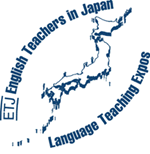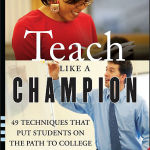conference EFL eikaiwa elllo ETJ high school JHS junior high school language courses Language learning materials online resources oxford owl popjisyo presentations renshuu rikai self-study teaching technology TED university video
by sendaiben
leave a comment
Tohoku (Sendai) ETJ Expo -Sunday December 2 at Tohoku Bunka Gakuen University
I’ll be presenting at the ETJ Expo in Sendai this weekend, talking about useful online resources to help students study more effectively.
The schedule for the event is here, and the map/directions are here.
My workshop is at 12:30 -hope to see you there!
ALTs business EFL eikaiwa ES expectations JHS kids life in Japan school management teaching teaching culture Uncategorized university
by sendaiben
5 comments
Skewed rewards and incentives (why are university teachers at the top of the pile?)
I have taught at private language schools, public elementary, junior high, and senior high schools, and universities in Japan. They roughly rank in that order in terms of prestige, financial remuneration, and ease of getting a job.
A job at an eikaiwa school is the easiest to get, the worst paid, and has the least amount of prestige (want proof? See how estate agents treat you). Working in public schools is better paid, more challenging to get, and is perceived as being higher by society (some of the dwindling prestige of public school teachers rubs off). Finally, a university position tends to pay rather well, involves jumping through various hoops (publications, experience teaching at the tertiary level, Japanese ability, postgraduate qualifications), and confers a reasonably high status (varying somewhat according to the institution in question).
Seemingly illogically, the actual amount of skill required to do the job well seems to run in the opposite direction. I would say, based on my experience, teaching at an eikaiwa, where you will probably have students ranging from 3 to 70 years old, and classes that run the gamut from 40 kindergarteners to one sleep-deprived businessman or a group of senior citizens, requires the most skill to perform well.
Teaching in public schools can provide discipline challenges, but the range of teaching situations is less varied and the curriculum provides a framework that reduces the amount of material teachers need to master.
Finally, teachers at the university level probably need the least amount of teaching skill to get by: their students are selected for academic potential (yes, even at the worst universities) and teachers tend to have the freedom to decide on the content of their classes. University teachers are pretty much encouraged to teach to their strengths, and can get away with teaching a narrow range of material if they so choose.
So why are the positions that need the most skilled teachers the worst paid?
You can see something similar even within public schools: kindergarten teachers are the least well paid and regarded, followed by elementary school teachers, then junior high school teachers, and finally high school teachers. However, if we look at the potential impact that teachers can have upon their charges, the early years are far more influential. Children who have excellent teachers during the first years of their schooling, then mediocre ones later, are likely to do much better than children in the opposite situation. Why then does society seem to have its priorities so badly skewed?
Is this fixable? Can you imagine a world where kindergarten teachers are given the pay, training, and status the importance of their job deserves? Will the cushiness of university positions be reflected in salaries?
As always, comments very much appreciated below.
Amazon.com curriculum EFL eikaiwa ES expectations JHS kids reviews teaching The Book Depository theory university
by sendaiben
5 comments
Teach Like a Champion in Japan
Teach Like a Champion is a recent book by Doug Lemov. Despite the cheesy title, I found it interesting, inspiring, and useful, and heartily recommend it to any teacher facing classes (the techniques are probably less useful for teaching one on one).
The book was written from a US K-12 (kindergarten to twelfth grade) perspective, so is a perfect fit for teachers working in elementary or junior high schools. Not all of the techniques are suitable for high school or university students, but a lot of them are, particularly in Japan, so even teachers working at those levels should consider it.
Teach Like a Champion is based on a philosophy of efficiency (what works best for the most students in the least amount of time). It’s a mindset that I admire and have been trying to apply to my classes here for quite some time now. One of my favourite parts of the book is where Lemov talks about the opportunity cost of activities:
“(reading) is a high-quality activity (when done efficiently) that can be carried out in any classroom, at any time, and with limited additional preparation or expense required. You can always invest any stretch of time, short or long, in meaningful reading and reap a strong and predictable retun. Furthermore, if you know you could always be doing meaningful reading -in any class, at any time -you can examine your other investments of time critically: do they exceed the value of meaningful reading? Are they potentially higher return but riskier and therefore should be balanced with something more reliable? As you ask these questions, you may well find that reading crowds out some of the other ways you invest your time.”
This mindset permeates the book, and makes it very persuasive. The idea of the opportunity cost of classroom activities is a simple one that I had never really thought about specifically. On reflection, my benchmark activity teaching English in Japan is extensive reading. Now, for me to do something else in class requires that it be more profitable than ER. Using this idea makes a huge difference to lesson planning.
I really like how Lemov brings a critical eye to classroom practice, making the overall tone of the book one of experimentation. The bulk of the book, however, is taken up by 49 very specific teaching techniques. Lemov claims that after observing hundreds of masterful teachers, he found that many of them were using the same strategies and activities, which he describes in Teach Like a Champion. There is also an online supplement with videos of the teachers in question using the techniques. In my opinion it is worth buying the book just to get access to this resource.
Teach Like a Champion is not perfect. It can feel a little cultish at times (all the techniques have names, which Lemov explains as being necessary in order to clearly convey what he is talking about, but names like “at bat” or “pepper” sometimes feel a bit silly), and the focus is very much on the US K-12 system. However, most of the techniques are universal, and I have successfully implemented them with both small group eikaiwa kids and university classes. All things considered, Teach Like a Champion is one of the best books on teaching I have read (I’ve actually read it twice, and am about to re-read it again to refresh everything), and a couple of friends who have also read it feel the same way.
Unfortunately it doesn’t seem to be available through Amazon.co.jp, so I ended up buying the Kindle version from Amazon.com and reading it on my iPhone, but it’s worth getting a copy sent from the US. For a free postage and packing option, check out The Book Depository.
* Disclaimer: the links in this review are affiliate links. If you click on the links and then buy the product, Amazon or The Book Depository will pay me about 3% of the cover price. This comes out of their profits, it does not make the product more expensive for you than buying it normally. Think of it as a tip to this blog. Of course, if you prefer, you can go straight to their websites and search for the book yourself. I won’t hold it against you 😉
conference curriculum EFL eikaiwa ES Jelly and Bean JHS kids language courses Language learning readers Reading teaching
by sendaiben
leave a comment
Phonics Readers for Children
My final presentation was on teaching children (and beginners) how to read. Starting with phonics and moving on to phonics readers. I also introduced my favourite reader series, Jelly and Bean (now renamed Follifoot Farm).
EFL eikaiwa extensive listening JHS Language learning listening online resources self-study
by sendaiben
2 comments
Great listening practice -improved! How to combine two websites to maximise student benefit
 Last Thursday I was teaching a special class to high school students (my university loves reaching out to the community, and this program is part of their PR efforts) when I accidentally combined two websites: Popjisyo and Elllo. I encourage my students to use both websites, but had never thought to combine them before.
Last Thursday I was teaching a special class to high school students (my university loves reaching out to the community, and this program is part of their PR efforts) when I accidentally combined two websites: Popjisyo and Elllo. I encourage my students to use both websites, but had never thought to combine them before.
Accessing Elllo through Popjisyo allows students to get mouseover translations of tricky words in the transcripts, and also to save new words to a vocabulary file that they can then email to themselves to review later.
Best of all, both websites are free and don’t require registration, so they are easy to introduce and get students using. This also opens up Elllo to lower level students that would have found it too challenging without the mouseover translation support.
I successfully introduced the combination to junior high school students on Saturday, and they seemed to like it!



